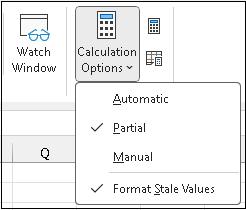Written by Allen Wyatt (last updated February 1, 2025)
This tip applies to Excel 2007, 2010, 2013, 2016, 2019, 2021, 2024, and Excel in Microsoft 365
Alan notes that when he enters a number using scientific notation in a formula, the result is numerically correct, but it is formatted with strikethrough applied and the strikethrough can't be removed with formatting tools. He wonders how he can get Excel not to apply the strikethrough formatting.
What is displayed in a cell is often the result of not just a formula, but also formatting that may have previously been applied to the cell. This means that it is very possible that the cell into which Alan is entering his formula was either previously formatted for strikethrough or it has a conditional format that utilizes strikethrough.
This can be easily checked. Before entering the formula, select the cell and then press Ctrl+Shift+F. Excel displays the Font dialog box, and you can check to see if the Strikethrough check box is selected in the Effects area of the dialog box. If it is, then anything you enter into the cell will be displayed using strikethrough.
It is possible, as well, that someone has applied a custom style to the cell, a custom style that utilizes strikethrough. You can determine this by selecting the cell and, on the Home tab of the ribbon, clicking the Cell Styles tool. This displays a drop-down palette of both built-in and custom styles. The custom styles will be at the top of the palette, and you can tell if one of them is selected, which means it is applied to the cell, and if that style utilizes strikethrough.
To check the conditional formatting, again select the cell. Then, on the Home tab of the ribbon, click Conditional Formatting and then Manage Rules. This displays the Conditional Formatting Rules Manager dialog box and it will be immediately apparent if there are any conditional formatting rules applicable to the cell.
If you want to skip to the chase, you can simply clear all the formatting in the cell. You do this by displaying the Home tab of the ribbon, clicking Clear (in the Editing group), and then Clear Formats. This removes all formatting from the selected cells, which means that if you want to use scientific notation in the cell, you'll need to reapply that format.
Finally, if none of this works, it is possible that there is a macro at play that is doing the formatting. For instance, if the workbook includes an event handler that is triggered after entering something in a cell, the handler could be applying formatting. If you suspect this, you'll need to either modify the macro or save the workbook as an XLS file (which strips out all macros) and then see if that fixes the issue.
ExcelTips is your source for cost-effective Microsoft Excel training. This tip (8062) applies to Microsoft Excel 2007, 2010, 2013, 2016, 2019, 2021, 2024, and Excel in Microsoft 365.

Professional Development Guidance! Four world-class developers offer start-to-finish guidance for building powerful, robust, and secure applications with Excel. The authors show how to consistently make the right design decisions and make the most of Excel's powerful features. Check out Professional Excel Development today!
Moving your custom formats into a formatting category other than "custom" isn't something you can do in Excel. Here's ...
Discover MoreIf you want to apply a conditional format to data imported into Excel from Access, you may run into some difficulties ...
Discover MoreApplying different formatting to the text within a cell can seem a bit confusing. This is certainly the case when it ...
Discover MoreFREE SERVICE: Get tips like this every week in ExcelTips, a free productivity newsletter. Enter your address and click "Subscribe."
2025-02-01 11:27:41
Jack Wagner
Re strikethrough formatting tip, another possible answer if the cell contains a formula or is referenced in a formula, at least in the latest version of Microsoft 365 Excel, is that automatic calculation has been turned off. All formula results in the worksheet will show strikethroughs until the sheet is recalculated.
2025-02-01 11:06:05
J. Woolley
My Excel 365 includes Stale Value Formatting described here:
"When the underlying data for a formula in a cell changes, however the formula has not been recalculated yet, then that cell is considered stale. In Partial and Manual Calculation modes, Excel denotes a stale cell with a strikethrough to alert users that its value is not yet reliable and should be recalculated to account for recent changes."
"You can disable stale value formatting via the Ribbon under Formulas > Calculation Options > Format Stale Values." (see Figure 1 below)
https://support.microsoft.com/search/results?query=Stale+Value+Formatting

Figure 1.
Got a version of Excel that uses the ribbon interface (Excel 2007 or later)? This site is for you! If you use an earlier version of Excel, visit our ExcelTips site focusing on the menu interface.
FREE SERVICE: Get tips like this every week in ExcelTips, a free productivity newsletter. Enter your address and click "Subscribe."
Copyright © 2025 Sharon Parq Associates, Inc.
Comments